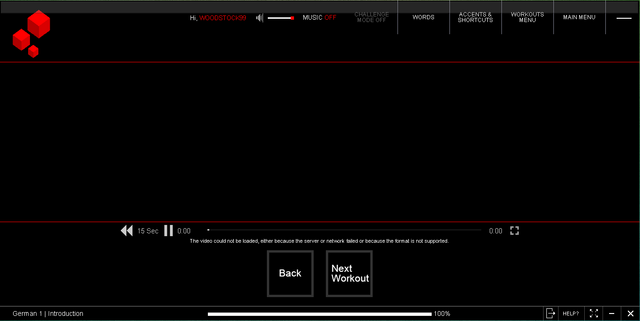
All of the exercises in between use material directly from the dialogue you listen to at the beginning of each session. The introduction, tutorial and conclusion are where the explanations and instruction come from. There are tutorial video explanations of the language concepts as well as plenty of “workouts” to help you practice - they all refer back to the session’s dialogue. Each level is made up of thirty sessions, each focused on a specific topic and centered around a dialogue that showcases the session’s language points. There are five levels in each language except for Mandarin where there are three. The approach was inspired by Gil’s first attempt at learning Mandarin, where she felt the instruction wasn’t taking into account the specific difficulties English speakers face while learning the language.įor the serious English-speaking language learner, Fluenz offers a one-on-one instruction experience that’s available on a wide range of devices and with offline functionality.

Unlike resources such as Rosetta Stone, Fluenz offers English explanations for all of the material it covers. Originally developed for English speakers who want to learn Mandarin, Fluenz has since branched out and now offers courses in seven popular languages. It’s definitely not the cheapest resource out there, but I’m a fan of the Fluenz method. You’ll probably need to take notes and seek out some supplementary resources for speaking practice, but the instruction is thorough.

It simulates the classroom experience and is best suited for learners that enjoy this. This is a resource for disciplined language learners that don’t need the learning experience to feel like a game. It does this by teaching languages through a series of recorded tutorials.įor this review, I tried out the Spanish Fluenz course, taught by Fluenz founder, Sonia Gil. The objective of the Fluenz software is to simulate a one-on-one instruction scenario. The Fluenz digital program attempts to bring one of these experiences into your home, and I think it does a pretty good job of it. It’s hard for me to imagine a language learning journey that is efficient and truly effective that doesn’t include both of these elements: a structured learning program and real-life experience.

It wasn’t until I’d had both of these experiences that I started to really feel like I was approaching fluency.

My past experiences learning Spanish include a four-year university degree in the subject and a four-month immersion experience living with a Chilean family.


 0 kommentar(er)
0 kommentar(er)
